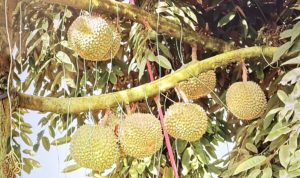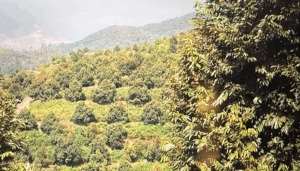BANGKOK/KUALA LUMPUR  –  As China’s middle class continues its rapid expansion, one Southeast Asian export has become an unexpected symbol of shifting regional power: the durian. Once celebrated primarily within Southeast Asia, the pungent fruit has become a luxury commodity in China, where demand has increased by more than 400 percent over the past decade. This surge has fueled a strategic agricultural partnership — what some analysts now call “durian diplomacy”—linking farmers, exporters, and investors across the ASEAN bloc with one of the world’s most voracious consumer markets.
Yet as the cross-border trade intensifies, so too does scrutiny. Both domestic and international observers have begun to raise concerns about land ownership loopholes, environmental risks, and the growing influence of Chinese capital in Southeast Asia’s agricultural systems. The documentary broadcast by Al Jazeera, released today, has further amplified these debates, spotlighting the tensions within local communities who fear losing control of their land and livelihoods.
What follows is a detailed examination of the trade flows, the key regional players, and the contested policies shaping Southeast Asia’s durian export boom.
Thailand: A Fruit Powerhouse Under Pressure
Thailand remains the undisputed titan of the durian export industry. In 2023, it supplied over 90 percent of all durian imports to China, shipping more than 820,000 metric tons, valued at roughly $4.5 billion, according to data from Thailand’s Ministry of Commerce and China’s General Administration of Customs. Durian has now become Thailand’s single most valuable fruit export.
But Thailand’s success story is increasingly complicated by the scale of Chinese investment within its borders. Officially, foreign nationals — including Chinese investors — are prohibited from owning farmland in Thailand. Yet reporting by domestic outlets such as the Bangkok Post and international newsrooms including Reuters and Nikkei Asia has uncovered widespread use of Thai “nominee” owners who hold land titles on behalf of foreign companies. This practice, while illegal, has become hard to police.
Communities in Chanthaburi and Rayong — Thailand’s primary durian-growing provinces — told Al Jazeera reporters that vast tracts of orchards are now controlled or managed by Chinese entities, even though the land is formally registered under Thai citizens. Villagers questioned how large Chinese-financed plantations could operate so openly when ownership rules supposedly prevent such control. Several told the network that profits “flow straight back to China,” with local partners receiving only service fees.
Thai government officials have acknowledged the issue indirectly. The Ministry of Agriculture has launched limited investigations, but critics argue enforcement has been slow and overshadowed by national ambitions to maintain export dominance in a highly lucrative market.
Malaysia: A Premium Niche and the World’s Largest Plantation
Malaysia, home to the world’s largest durian plantation — an expansive multithousand-hectare complex in Pahang — stands as the second-largest durian supplier to China. In 2023, Malaysia exported roughly 25,000–30,000 metric tonsof durian to China. While small compared to Thailand’s volume, Malaysia’s exports command higher prices because they include premium varieties such as Musang King and Black Thorn.
Malaysia’s durian diplomacy took a major step forward in 2019, when Beijing approved the import of whole frozen Malaysian durian. Previously limited to pulp and paste, Malaysian producers could finally access China’s market for whole-fruit sales, prompting rapid expansion of industrial-scale plantations.
But the country faces its own controversies. Environmental groups— among them Sahabat Alam Malaysia and WWF-Malaysia — have warned that large durian estates have contributed to deforestation, particularly in the Raub and Kelantan regions. Local media, including The Star and Malay Mail, have reported growing concerns from Indigenous communities whose traditional lands overlap with new durian concessions.
Chinese capital is also active in Malaysia’s durian sector, though less controversially than in Thailand because foreign ownership rules are more flexible. Still, questions persist about long-term sustainability and whether profits will remain domestic or shift abroad.
ASEAN’s Other Emerging Players
Although Thailand and Malaysia dominate, several ASEAN nations are rapidly expanding production:
- Vietnam: In 2023, Vietnam secured new export protocols with China and shipped over 20,000 tons in its first full export year. Analysts expect this number to triple by 2026.
- Philippines: The country exported about 1,000 tons of durian to China in 2023 after signing a bilateral agreement during President Ferdinand Marcos Jr.’s visit to Beijing.
- Laos and Cambodia: Both have welcomed sizable Chinese-backed agricultural projects aiming to convert farmland into durian orchards for direct export.
Together, the ASEAN bloc is projected to supply more than 1 million tons of durian to China annually within the next five years.
A Regional Balancing Act
China’s influence in Southeast Asia’s durian industry reflects broader geopolitical and economic dynamics: local governments want access to China’s market; farmers welcome higher prices; and investors see opportunity in the fruit’s soaring popularity.
But as Al Jazeera’s documentary highlights, the model is not without costs. Communities in Thailand and Malaysia have raised alarms about land access, environmental degradation, and the long-term consequences of foreign-dominated agribusiness.
For now, durian diplomacy sits at the intersection of opportunity and vulnerability — a symbol of Southeast Asia’s deepening economic entanglement with China, and a reminder that even the region’s most iconic fruit is part of a much larger negotiation.
If you’d like, I can also prepare a shorter media brief, a fact-sheet by country, or a version tailored specifically for government or investor audiences. (hz)



